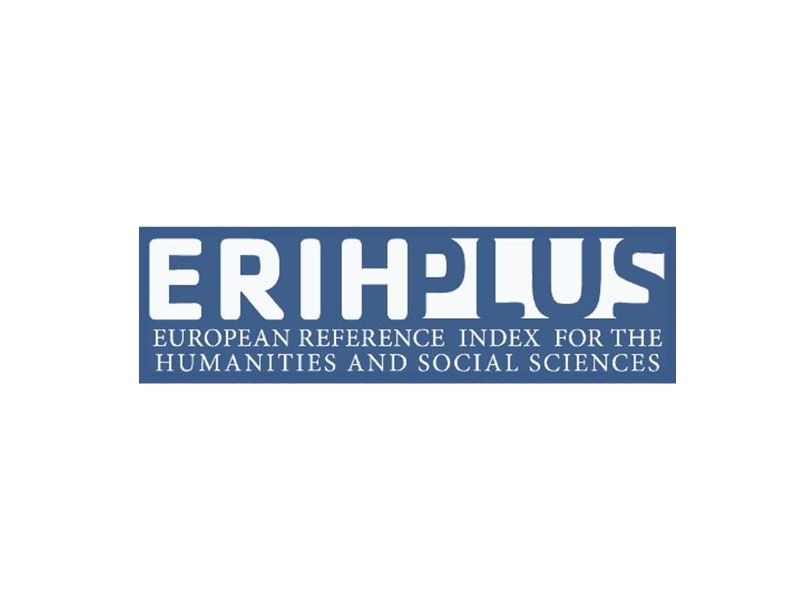The Death Drive of Evolution (From the Perspective of Depressive Realism)
Abstract
This paper analyses Charles Darwin and Sigmund Freud as depressive realists who attempted to dethrone the human species from their central place in nature and history. Both evolutionary theory and Freudian-Lacanian psychoanalysis partly preserve the idea of human exceptionalism, while considering psychoanalysis’s negative conceptualization of humans as the most maladapted species. This maladaption is conventionally conceptualized in psychoanalysis as a rupture from the natural order and is sometimes presented as the embodiment of the death drive. Such a concept of the death drive tends to be seen as an exclusively human drive. Developments in recent evolutionary biology and psychoanalytic thought suggest ways to elaborate on the concept of the death drive as not being exclusively human. Nature’s evolution is not the embodiment of progress that results in the appearance of the human species, and it is not the embodiment of a harmony from which humans deviate, but it is rather a rupture with itself. Nature as such is an embodiment of the death drive.
References
Chiesa, Lorenzo (2009). “The World of Desire: Lacan between evolutionary biology and psychoanalytic theory.” Filozofski vestnik [Philosophical journal] 30.2: 83–112.
Chiesa, Lorenzo (2018). “Lacan with Evo-Devo?” In Inheritance in Psychoanalysis, eds. Joel Goldbach and James A. Godley, 44–57. New York: SUNY Press.
Darwin, Charles (1859). On the Origin of Species by Means of Natural Selection, or, The Preservation of Favoured Races in the Struggle for Life. London: J.
Murray. Darwin, Charles (1874). The Descent of Man and Selection in Relation to Sex. London: J. Murray.
Darwin, Charles (2018). Evolution: Selected Letters of Charles Darwin, 1860–1870. Ed. Francis Darwin. New York: Dover.
Dennett, Daniel (1995). Darwin’s Dangerous Idea: Evolution and the Meanings of Life. London: Penguin.
Freud, Sigmund (1990). Beyond the Pleasure Principle. New York: Norton.
Freud, Sigmund (1916–1917). Introductory Lectures on Psycho-Analysis. Vol. 15. Ed. James Strachey. London: Hogarth Press.
González Galli L., and Elsa Meinardi (2010). “The Role of Teleological Thinking in Learning the Darwinian Model of Evolution.” Evol Educ Outreach 4.1: 145–52.
Gould, Stephen Jay, Lewontin Richard (1979). “The Spandrels of San Marco and the Panglossian Paradigm: A Critique of the Adaptationist Programme.” Proceedings
of the Royal Society of London 205: 581–98.
Gould, Stephen Jay (1984). Darwin et les Grandes Énigmes de la vie. Paris: Seuil.
Gould Stephen Jay, Vrba Elisabeth S. (1982). “Exaptation—A Missing Term in the Science of Form.” Paleobiology 8: 4–15.
Gould, Stephen Jay (1989). Wonderful Life: The Burgess Shale and the Nature of History. New York: Norton.
Gould, Stephen Jay (1996). “Creating the Creators.” Discover Magazine. https://www.discovermagazine.com/planet-earth/creating-the-creators.
Gould, Stephen Jay (1997). “The Exaptive Excellence of Spandrels as a Term and Prototype.” PNAS 94 (1997): 10750–55.
Gould, Stephen Jay (2000). “Evolution and the 21st Century.” Annual Meeting of the American Institute of Biological Sciences. https://youtu.be/DRB19MYxaUs.
Gould, Stephen Jay (2001). “Nonoverlapping Magisteria.” In Intelligent Design, Creationism and its Critics. Philosophical, Theological, and Scientific perspectives, ed. Robert T. Pennock, 737–49. Cambridge: MIT Press.
Gould, Stephen Jay (2002a). The Structure of Evolutionary Theory. Cambridge, MA: Belknap Press of Harvard University Press.
Gould, Stephen Jay (2002b). Rocks of Ages: Science and Religion in the Fullness of Life. New York: Ballantine Books.
Johnston, Adrian, and Catherine Malabou. (2013). Self and Emotional Life: Philosophy, Psychoanalysis, and Neuroscience. New York: Columbia University Press.
Jones, Ernest (1972). Sigmund Freud Life and Work, Vol. One: The Young Freud 1856–1900. London: The Hogarth Press.
Lacan, Jacques (2014). The Seminar of Jacques Lacan: Book X. Anxiety [1962–1963]. Cambridge: Polity Press.
Lacan, Jacques (2018). The Seminar of Jacques Lacan, Book XIX: ... or Worse [1971–1972]. Cambridge: Polity Press.
Lacan, Jacques (1988). The Seminar of Jacques Lacan, Book I: Freud’s Papers on Technique [1953–1954]. New York: Norton.
Lacan, Jacques (1988). The Seminar of Jacques Lacan: Book II. The Ego in Freud’s Theory and in the Technique of Psychoanalysis [1954-1955]. New York: Norton.
Lacan, Jacques (2002). The Seminar of Jacques Lacan, Book VIII: The Transference [1960–1961]. London: Karnac Books.
Marcaggi, Geoffrey, and Fabian Guénolé (2018). “Freudarwin: Evolutionary thinking as a root of psychoanalysis.” Frontiers in Psychology 9, article 892: 1–9.
Marx, Karl (1942). “Letter to Lassalle” [1861]. Marxists Internet Archive. https://www.marxists.org/archive/marx/works/1861/letters/61_01_16-abs.htm.
McGowan, Todd (2013). Enjoying What we Don’t Have: The Political Project of Psychoanalysis. Lincoln: University of Nebraska Press.
Merhej, V. and D. Raoult (2012). “Rhizome of Life, Catastrophes, Sequence Exchanges, Gene Creations, and Giant Viruses: How Microbial Genomics Challenges Darwin.”
Frontiers in Cellular and Infection Microbiology 2, article 113: 1–17.
Koonin, E. V. (2009). “Towards a Postmodern Synthesis of Evolutionary Biology.” Cell Cycle 8(6): 799-800.
Merhej, Vicky, Raoult Didier (2009). “Darwin’s Place in the History of Thought: A Reevaluation.” PNAS 106: 10056–10060.
Rifkin, Jeremy. (1985). Declaration of a Heretic. London: Routledge and Keegan Paul.
Richards, Robert (2009). “Darwin's Place in the History of Thought: A Reevaluation” PNAS 106:10056–10060.
Stearns, Beverly Peterson, and Stephen C. Stearns (2000). Watching, from the Edge of Extinction. New Haven, CT: Yale University Press.
Taylor, Shelley E., Margaret E. Kemeny, Geoffrey M. Reed, Julienne E. Bower, and Tara L. Gruenewald (2000). “Psychological Resources, Positive Illusions, and Health.” American Psychologist 55.1: 99–109.
Zupančič, Alenka (2017). What is Sex? Cambridge, MA: MIT Press.
Zupančič, Alenka (2019). “Human Animal.” NLO 158.4
Žižek, Slavoj (2019) Sex and the Failed Absolute. London: Bloomsbury Academic.
Žižek, Slavoj (2009). The Parallax View. Cambridge, MA: MIT Press.
Žižek, Slavoj (2011) Living in the End Times. London: Verso.
Žižek, Slavoj (2012). Less Than Nothing: Hegel and the Shadow of Dialectical Materialism. London: Verso.
Žižek Slavoj, and Anja Steinbauer (2017) “Interview. Slavoj Žižek” Philosophy Now 122 https://philosophynow.org/issues/122/Slavoj_Zizek.
Copyright (c) 2021 European University at Saint-Petersburg

This work is licensed under a Creative Commons Attribution 4.0 International License.







